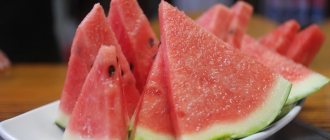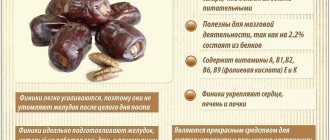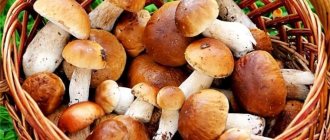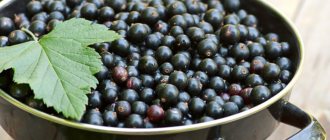Figs are a two-meter tree with a dense, lush crown that produces tasty fruits. Figs can and should be eaten by a nursing mother. It will replace sweets, give the body the necessary vitamins and will be an excellent means of preventing colds and other diseases.
However, remember the important principle of breastfeeding - do not overuse or pass on! After all, even the safest and hypoallergenic product, if the dosage is exceeded, can cause bloating and colic in infants, intestinal disorders and even poisoning.
Let's figure out what beneficial effects figs have and in what quantity a nursing mother can consume the fruit.
Beneficial features
- Helps with depression, charges with positivity and energy;
- Relieves fatigue and irritability, gives strength;
- Stimulates brain activity;
- Reduces blood cholesterol levels;
- Prevents heart and vascular diseases;
- Prevents the formation of blood clots and anemia;
- Forms, restores and strengthens the immune system, fights colds, viruses and infections;
- Relieves fever and sore throat;
- It has a diuretic effect, which makes it possible to use figs to remove toxins from the body in case of poisoning;
- Normalizes digestion and intestinal function;
- Quickly heals wounds and restores the skin;
- Fig syrup and jam have a mild laxative effect, which will help relieve constipation in a nursing mother;
- Strengthens the structure and promotes hair growth.
Compound
| Vitamins and elements | Effect on the body | Contents per 100 g of product |
| B1 (thiamine) | Improves the functioning of the brain and nerve cells, heart and muscles, ensures normal digestion of food, | 60 mcg |
| B2 (riboflavin) | Ensures body growth and normal vision, improves the condition of skin, hair and nails | 50 mcg |
| B9 (folic acid) | Removes excess fat from the liver, ensures normal protein metabolism, improves blood composition, gives healthy hair and skin, gives strength | 10 mcg |
| C (ascorbic acid) | Protects and helps with influenza and other viral diseases, strengthens the immune system and improves mood, improves the elasticity of blood vessels and accelerates wound healing | 2 mg |
| PP (niacin) | Ensures normal functioning of the brain and nerve cells, lowers blood pressure and improves blood circulation | 0.5 mg |
| Potassium | Ensures normal functioning of cells, supplies the brain with oxygen, normalizes heart rate and removes toxins from the body | 190 mg |
| Sodium | Maintains a normal balance of water and salts in the body, ensures the functioning of muscles, cells and kidneys | 18 mg |
| Iron | Forms hemoglobin, normalizes thyroid function and protects the body from bacteria | 3.2 mg |
How to eat figs during lactation
- When breastfeeding, it is better to eat figs in dried form. With this processing, the product is easier to digest. However, it contains 10-15% more sugar than regular fruits;
- Figs should not be eaten if you have gout, pancreatitis and acute inflammatory diseases (infections) of the intestines;
- Due to the increased sugar content, dried figs are contraindicated for a nursing mother with diabetes;
- When breastfeeding, start eating figs two to three months after the baby is born;
- For the first time, eat half the fruit in the first half of the day before feeding. Monitor your newborn's reaction for two days. If there are no allergies or other disorders, figs can be eaten without risk;
- If a newborn has a negative reaction, postpone the introduction of a new product into the diet during lactation for a month. Then you can try again. After all, the older the baby, the more adapted the body is to new conditions and new food;
- If the child’s health is fine, you can increase the amount of figs. The daily norm of fresh fruits is three pieces, dried fruits are five pieces per week. At the same time, you can eat no more than six fresh and no more than ten dried fruits per week;
- Wash fruits thoroughly before eating.
Can a breastfeeding mother eat figs?
Figs are very good for health. It contains many valuable and nutritious substances. It is not logical from a health point of view to refuse such a product for the entire period of breastfeeding. The use of the product by nursing mothers is accompanied by some nuances, which we will discuss below.
Figs will be useful for mothers during breastfeeding, but you should adhere to the following rules so as not to harm the baby.
In the first month after birth
Despite the fact that the product is very useful, most experts still recommend abandoning it in the first weeks after childbirth. The baby’s body adapts to environmental conditions for some time. The new type of nutrition is difficult for him, so negative reactions are possible even to the safest foods. Figs are an exotic fruit; they can cause allergies, so it is better to eat them later in the period of breastfeeding.
Opinion of nutritionists and breastfeeding specialists
Experts in the field of breastfeeding and doctors are inclined to believe that figs should be introduced into the diet 3 months after birth . This is explained by the possibility of the product influencing the baby’s gastrointestinal tract, as well as the likelihood of allergies.
Nutritionists consider this product extremely useful for women after childbirth. Thanks to its composition, figs promote weight loss. Excess weight is often a problem for women after pregnancy. The product speeds up metabolism, removes excess fluid from the body and normalizes water-salt balance.
How to properly introduce it into the diet and how much can you eat?
Like any other product for breastfeeding, figs must be administered correctly. It is recommended to start eating it 2-3 months after giving birth. The first time, eat no more than ½ of the fruit. It's better to try new foods in the morning. Monitor your child for about a week, as the product is an allergen. Usually the reaction appears within 1–2 days. The baby may be bothered by rashes, itching, spots, cough, colic, flatulence, etc.
If no negative reactions are detected, you can gradually increase the dose. It is still better to choose dried fruits when breastfeeding, rather than fresh fruits, since the risk of a large load on the gastrointestinal tract in this form is reduced. Over time, you can increase the amount of product in your diet. The maximum daily recommended dose is 3 dry fruits, or 5 fresh fruits. It is not recommended to eat more than 10 pieces per week.
| Baby's age | How much can you eat |
| 1 month | Absolutely forbidden |
| 2 month | Not recommended |
| 3 month | You can try no more than ½ piece per day |
| 4 month | It is allowed to be introduced into the diet starting from half the fruit. You should not eat more than 3 dried or 5 fresh fruits. Weekly dose - 10 pieces. |
| 5–6th month | You can eat 3 dried or 5 fresh fruits per day. Weekly dose - 10 pieces. |
Figs in cooking
Fig fruits are used both in cooking and for medicinal purposes. You can eat figs individually as a treat. In addition, dried fruits make delicious desserts and jam. Figs are added to salads and meat dishes. Sweet fruits go well with:
- Meat, especially chicken or turkey;
- With cheese, a nursing mother can eat pickled cheeses (feta, feta cheese and others). Hard cheese can be eaten in the third or fourth month of breastfeeding;
- With ham;
- Nuts (especially almonds);
- Eggs. Eggs should be eaten carefully when breastfeeding; if you have allergies, you can use hypoallergenic quail eggs;
- With cottage cheese and cottage cheese casserole. Cottage cheese is very healthy and nutritious for breastfeeding.
Delicious compote and syrup are made from figs. Read more. How to make compote from dried fruits, read here.
Contraindications for use
Those who are looking for an answer to the question of whether dried figs can be consumed while breastfeeding should first familiarize themselves with the list of people for whom this fruit is contraindicated. For example, it is forbidden to eat figs in any form for those who suffer from gout, pancreatitis and any infectious intestinal diseases.
You should not get carried away with figs if you are breastfeeding and have diabetes. Figs contain a lot of sugar, so it can be harmful to people with this disease.
Figs for beauty and health
As already mentioned, the fruits are also used for treatment. The syrup will heal your throat and relieve inflammation. To prepare syrup, cut and grind 100 grams of dried product. Add one tablespoon of sugar, mix and grind again until smooth. Pour a glass of boiling water over the mixture and leave for four hours.
Then mix the mixture with cooled boiled milk. Drink fig milk before meals 2-3 times a day. If the baby does not have allergies, you can add honey to the drink. Sugar improves the taste, but you can do without it. A decoction of fig fruits will help with constipation and inflammation of the respiratory tract, and relieve fever.
In addition, you can make face and hair masks from figs. An infusion of figs will give your skin a healthy and beautiful appearance with a velvety effect. To prepare an infusion, pour 25 grams of fruit with a glass of boiling water and leave for 3-4 hours. Strain the mixture and apply to your face every day.
The pulp and juice of figs will cleanse and rejuvenate the skin. Grind or puree the pulp of the fruit and apply to the skin. Leave on for 15-20 minutes, then rinse with warm water.
To strengthen the hair structure, prepare a mask of figs and milk. Two fruits are crushed and poured into a glass of milk. Fresh figs are poured with hot boiled milk, dry figs are brought to a boil along with the milk. The mixture is applied to the hair roots and scalp, then distributed along the length of the hair. Warm your head and keep the mask on for an hour. Rinse off with warm water. This mask not only strengthens hair and nourishes the scalp, but also adds shine and eliminates split ends.
In what form can a mother eat figs while breastfeeding?
If you're looking for sweet treats while breastfeeding, look no further than figs. It is best for a lactating woman to start using the product with dried fruits. It is also allowed to eat fresh figs, drink compote, and use them in preparing various dishes.
The most common consumption of figs is fresh and dried. It should be remembered that fresh fruit can cause colic, and dried fruit is higher in calories, so it is not recommended to abuse the product during breastfeeding. In addition, the concentration of nutrients in dried treats is much higher.
With cough milk
Figs with milk are a well-known cough medicine.
Compound:
- Fresh figs (can be dry) - 6–8 pieces.
- Milk - 2 glasses.
Preparation:
- Wash the fruits (soak the dried fruits in warm water for a few minutes).
- Cut it.
- Boil milk and add figs.
- Cook over low heat for 30 minutes.
- If the milk turns dark, don't be alarmed, this is normal.
- You can strain the milk from the fruits or blend them in a blender and drink.
Application: Drink 100 ml of the drink several times a day.
With milk for lactation
Drink the drink warm 30 minutes before feeding your baby. Breastfeeding mothers note that hot flashes occur more often and there is more breast milk.
Compound:
- Fresh figs (can be dry) - 100 g.
- Milk - a glass.
- Water - a glass.
- Sugar - to taste.
Preparation:
- Wash and chop the figs.
- Pour boiling water over it for several hours.
- Boil the milk and add to the mixture.
- Add sugar as desired.
- Let cool.
Fig jam
Many mothers are interested in whether it is possible to use jam while breastfeeding. A natural product made from components that are already in the diet is allowed to be eaten. During breastfeeding, a delicacy made from figs will be useful.
Compound:
- Figs - 1 kg.
- Sugar - 1 kg.
- Water - 2 glasses.
Preparation:
- Rinse the fruit and remove the stems.
- Fill the fruits with water and add sugar.
- Let it cook. Once boiling, reduce heat.
- Don't forget to collect the foam.
- Cook for about 20 minutes.
- Let cool.
- Boil again and simmer over low heat for 40 minutes.
- Sterilize the jars and pour the jam into it.
- Roll up and turn over. Cover the jam until it cools completely.
Compote with figs
Compote with figs will also be useful for a nursing mother.
Compound:
- Water - 1 l.
- Dry figs - 200 g.
- Sugar - to taste.
Preparation:
- Rinse the figs.
- Boil water and add figs and sugar.
- Cook for 15 minutes over low heat.
- Cover the pan with a lid for several hours.
You can also add apples, pears, dried apricots, prunes or dates to the compote to taste if you are breastfeeding, if they are already present in your diet.
You might be interested to know “What compotes for a nursing mother can be made from dried fruits?”
How to dry figs at home
A product prepared at home is always safer than store-bought ones. Store-bought dried figs often contain preservatives and other chemicals that are harmful to babies. To protect your baby, it is better to dry the fruit yourself.
For drying, choose fully ripe fruits without dents, cracks or other damage. Rinse the fruits thoroughly and dry in a sieve. Then plunge into the bubbling sugar syrup for two to three seconds. Place on a wire rack with the top facing the sun. Turn the fruits every two days.
Dried fruits are removed after a week.
After which the upper part is pressed inward until a disk shape is obtained. The fruits are strung on a thread and put in a dark place to dry. In addition, dried fruits can be obtained using special drying for fruits and vegetables at a temperature of no more than 60 degrees. Subscribe to our VKontakte group
Recipes with figs for lactation
Figs are a truly versatile fruit. It can be added to meat dishes and salads, both fresh and dried. Dry figs make very tasty compotes, jams and desserts.
- Figs go well with meat dishes and poultry, especially turkey or chicken.
- Dietary boiled or steamed poultry during lactation is simply irreplaceable, and figs will make such a dish less dry and more aromatic.
- From the third or fourth month of feeding, natural pickled cheeses, for example, feta cheese, feta, sirtaki, can be introduced into the diet of a young mother. You can eat fresh or dried figs with a small piece of cheese and you will get an unusual piquant taste.
- Figs also go well with ham, nuts and eggs. But remember that during lactation these foods should be eaten carefully and in small doses. If you eat them, try adding a small piece of fig to them.
- Dried figs during breastfeeding are especially useful with cottage cheese or cottage cheese casserole. Throw crushed dry fruit into the dough while preparing a casserole or add it to natural cottage cheese - it’s very tasty!











